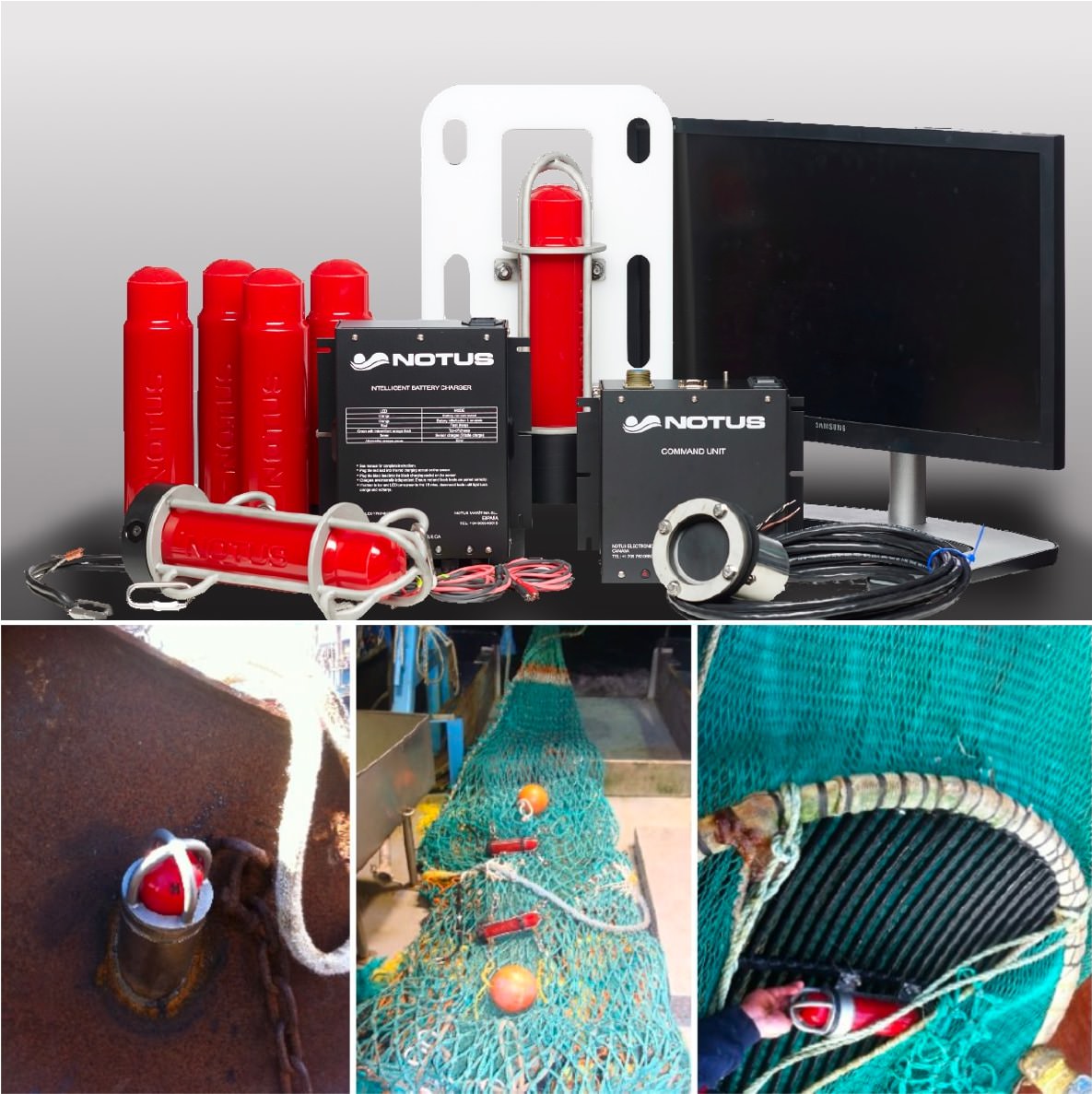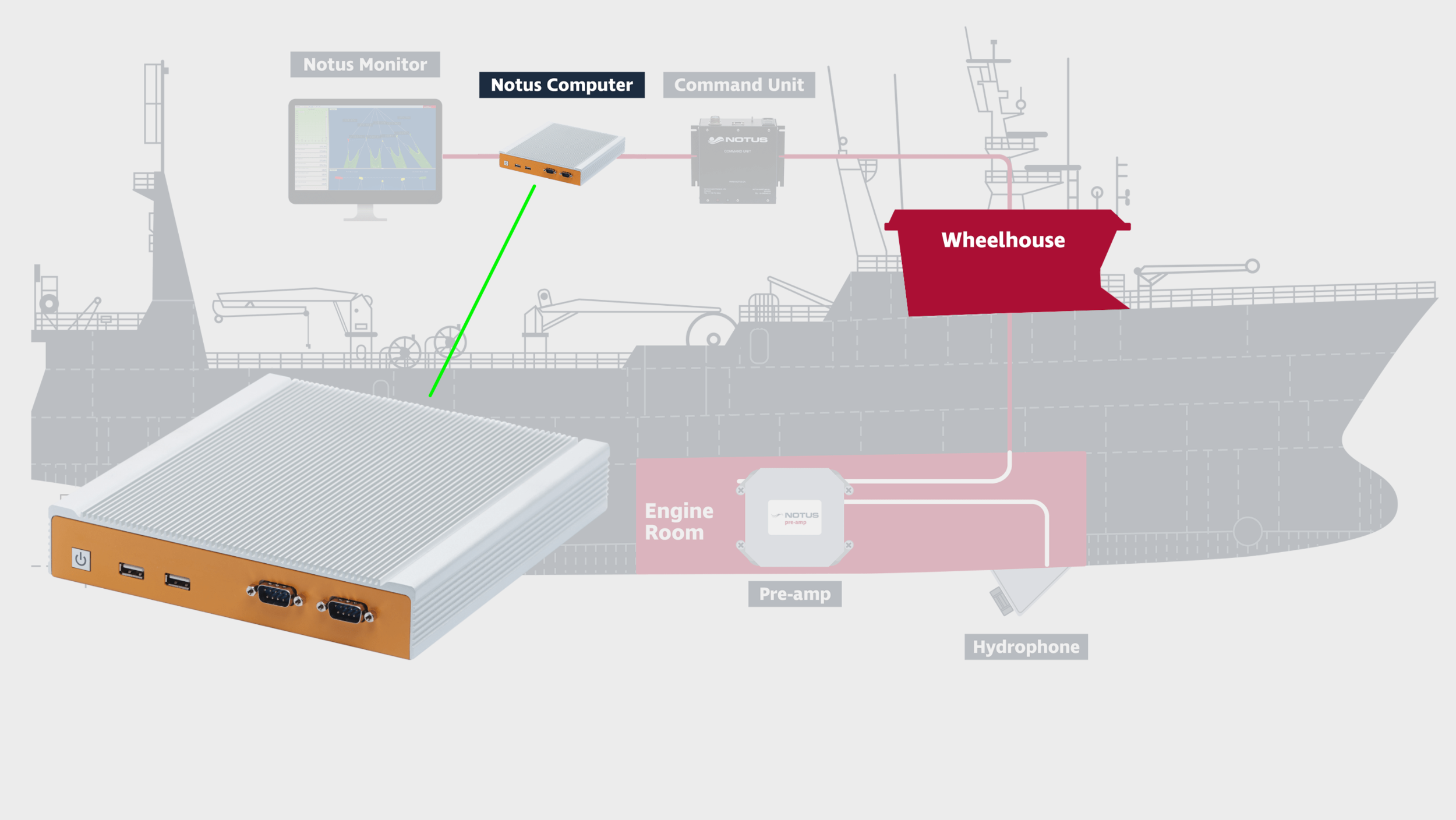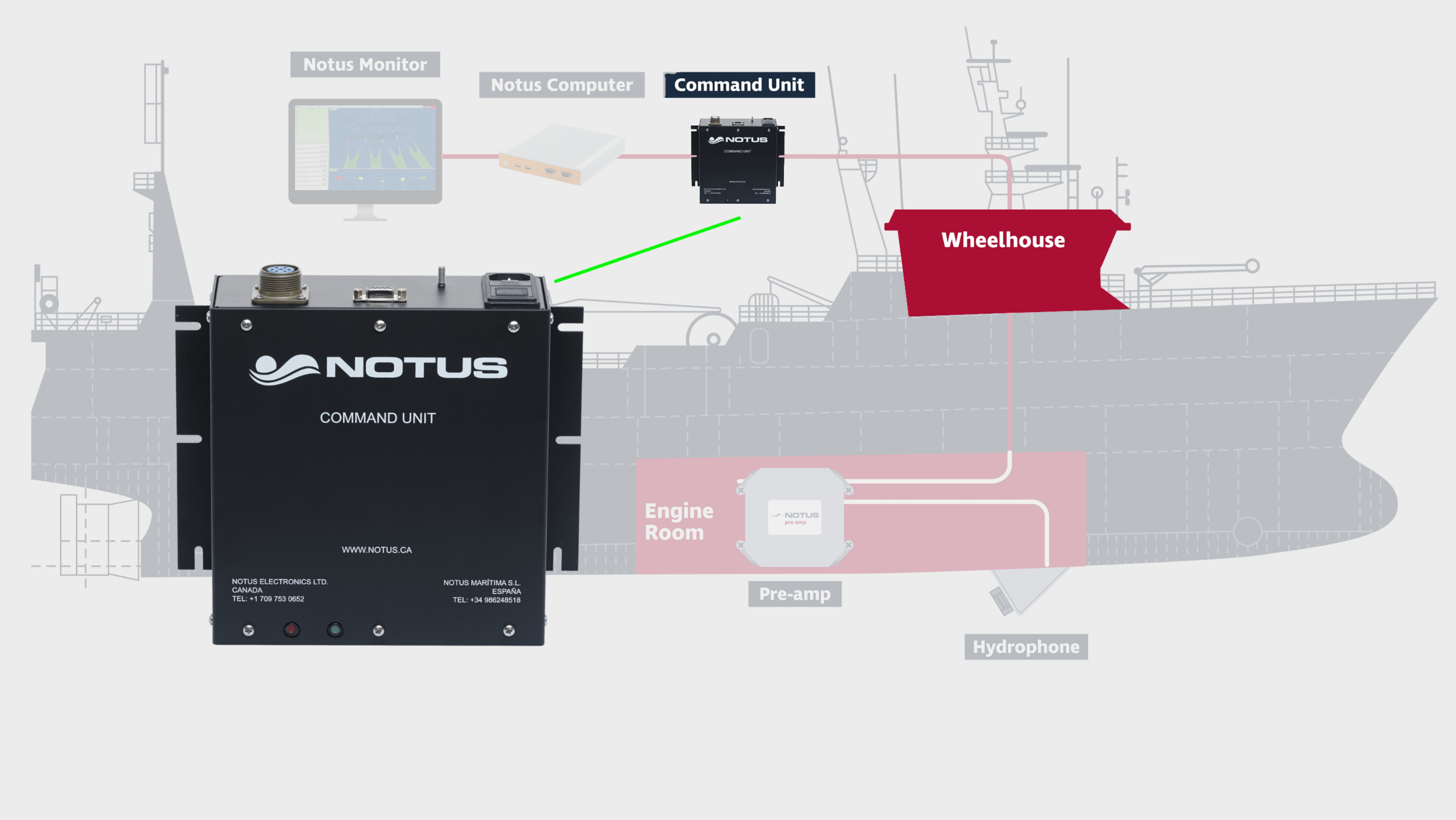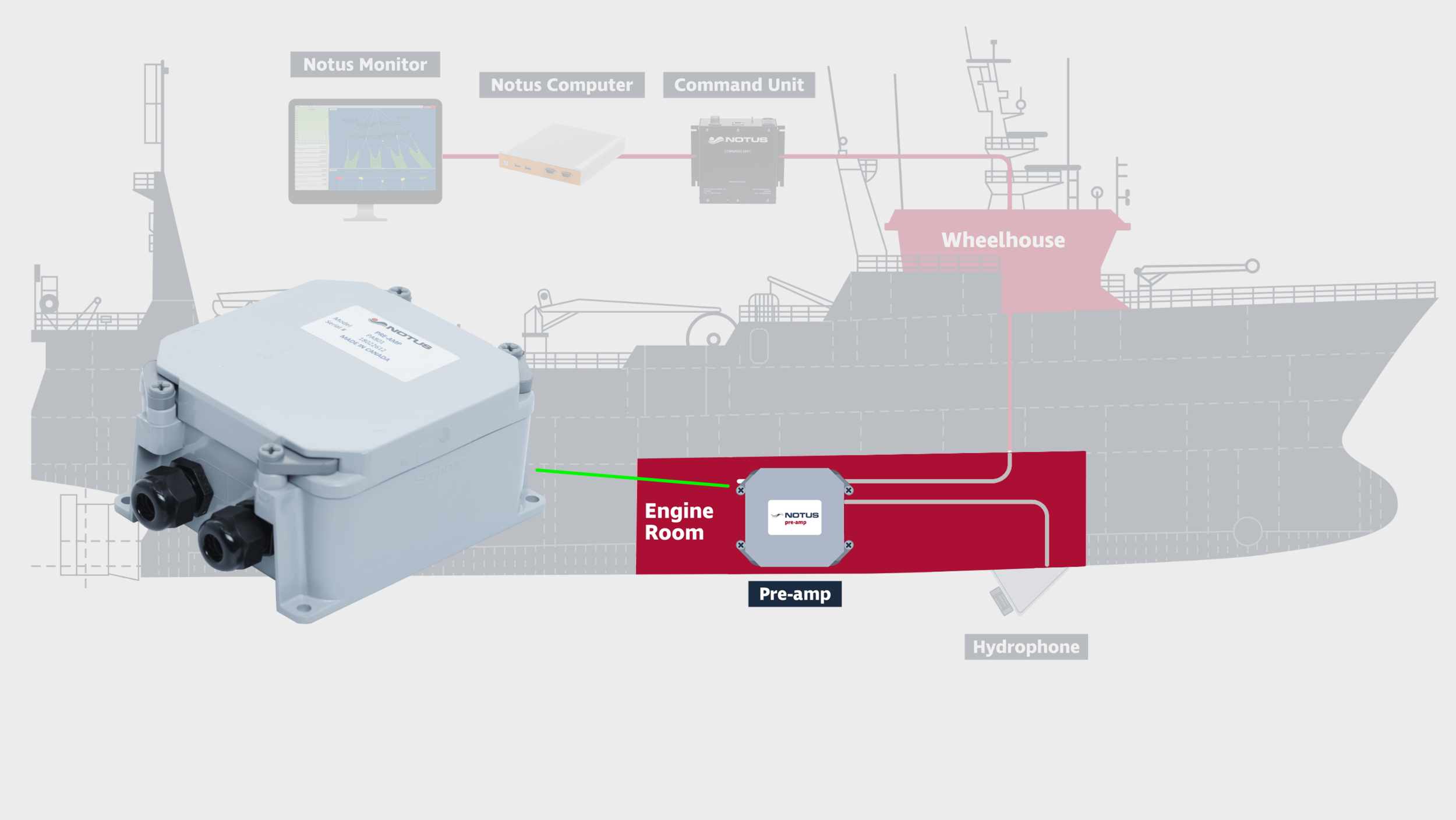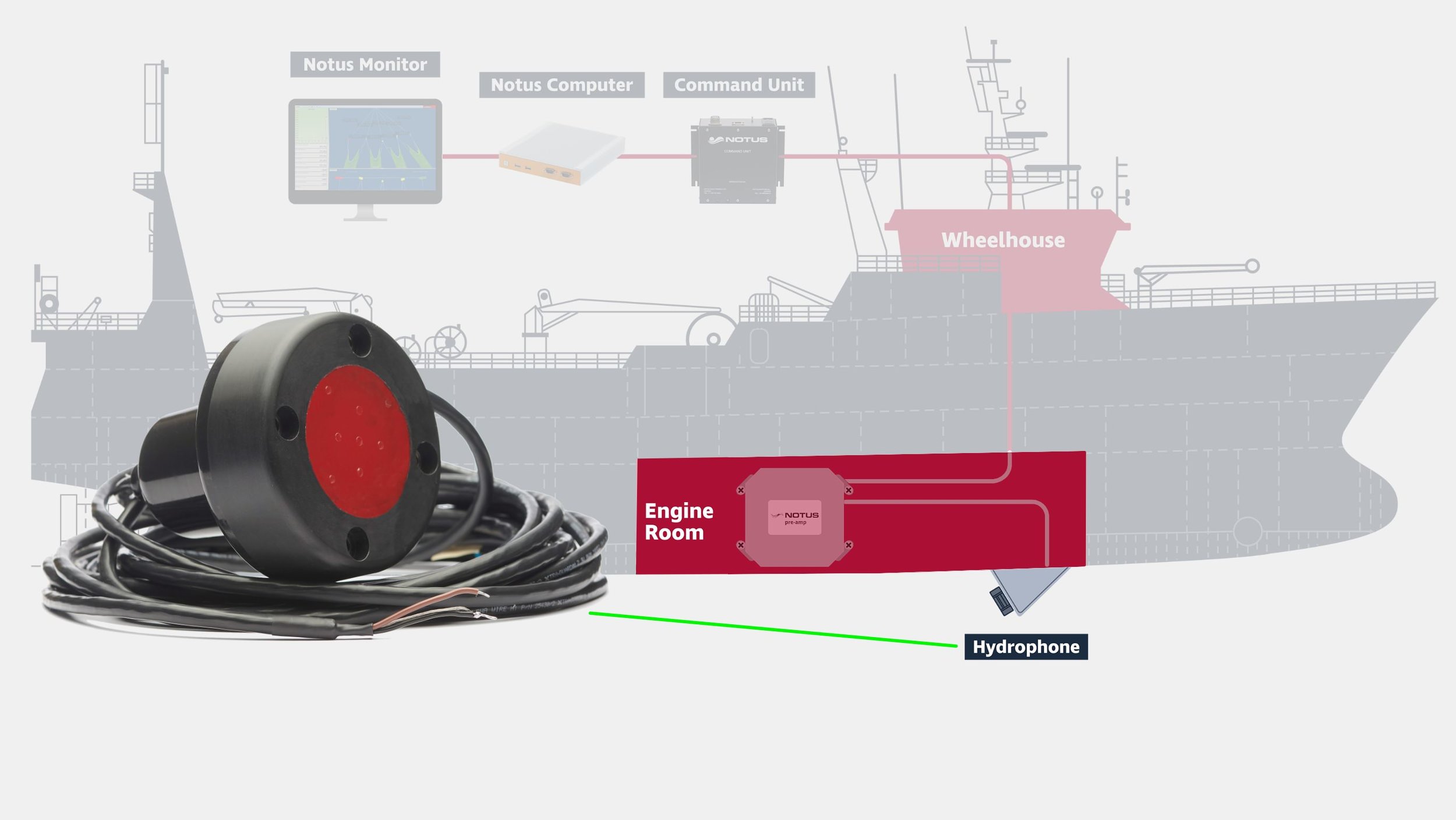Notus sensors boast an active, two-way communication system, not offered by other net monitoring systems. Instead of relying on traditional one-way pingers, Notus systems ‘talk’ to each other via proven two-way protocols. Using this reliable technology, Notus is the ONLY system capable of delivering trawl wire lengths with doorpsread of EACH net, giving a true geometric view of the gear.
Variable data rates: 5, 10, 20 and 60 second intervals
Notus is the only system to offer true, omnidirectional pattern beams in all of our net monitoring sensors. This is critical when turning, when a door has fallen over or when fishing gear is lost.
With Notus Activ-Omni Intelligence, achieve optimal performance, for superior results
Notus Sensors
DOORSPREAD SENSOR
Pictured: Twin Trawls + Door Spread
Doorspread is the distance between the doors on EACH net.
Major fuel savings are achieved with doorspread by adjusting the speed of the vessel to keep the optimal spread.
For example, towing just 0.1 knots too fast into a current can overspread the gear by 10 meters.
Doorspread for EACH net for twin & multi trawls
Pictured: Twin Trawls + Door Spread
Indicates when doors have crossed
Permits equal bilk on EACH net
Detects when door has fallen or is stuck.
Instantly see if a rock, pot or other debris is in the trawl
Notus has the only omnidirectional sensors on the market.
Doorspread is provided on a turn with one door 100 meters behind the other
TRAWL WARP MEASUREMENT SENSOR
Pictured: Twin Trawls + Trawl Warp Measurement
Trawl Wire Lengths – Made possible by Activ-Omni Intelligence
By measuring EACH set of trawl wires to within 0.1 meter, the Notus Trawlmaster:
Avoids measuring trawl wires on shore
Indicates the adjustment in cross current to "square" the doors
Doorspread and trawl wire lengths are standard Trawlmaster sensors. These sensors can be upgraded to include door depth, door angle and temperature.
Middle Wire Adjustment
Pictured: Twin Trawls + Middle Wire Adjustment
The middle wire adjustment is calculated to align the middle weight (clump) with the doors in twin rigs
Middle wire adjustment indicates:
When the clump is ahead of the doors, the trawls overspread
When the clump is behind the doors, the trawls under-spread, which can lead to gear damage
The Notus Trawlmaster Middle Wire Adjustment indicates the exact middle wire adjustment to align the clump with the doors, to ensure optimal fishing!
CLUMP DEPTH SENSOR
Pictured: Twin Trawls + Depth And Temperature
Depth sensors indicate the distance from the surface to the middle weight or clump.
The Clump Depth sensor:
Ensures the clump remains on bottom.
Indicates when too little wire out or when towing too fast has caused the clump to come off bottom
DOOR ANGLE SENSOR
Pictured: Twin Trawls + Door Angle
Door angle sensors provide the heel angle (inward/outward lean) and pitch angle (upward/downward pitch).
Set the trawl doors for optimal spread and optimal fuel consumption
Instantly indicate if too much trawl wire is shot as the door heels over
Confirm when doors are on bottom
Temperature Sensor
Pictured: Twin Trawls + Depth and Temperature
Temperature sensors indicate temperature wherever the sensor is located.
Locate larger schools by trawling in the right temperature range
Target specific species.
Determine where the fish are
HEADLINE HEIGHT SENSOR
Pictured: Twin Trawls + Headline Height
Headline Height sensors use an echo sounder to measure the distance from the headline to the seafloor. An optional footgear clearance sensor can be added to monitor the net opening and footgear clearance.
Raise and lower headline depending on species and trawling conditions
Indicate if the trawls are raising off the bottom due to towing too fast
Catch Sensor
Catch sensors indicate when the cod-end has a set amount of fish. Multiple sensors can be used to indicate different amounts of fish.
Notus Trawlmaster Catch sensors:
Confirms that the trawls are fishing
Only take back what you can handle onboard
Prevents hauling back trawls that are only half full
Provides a better indication of exactly where the fish are in the tow
Has a built-in gear location feature should you lose the trawls or just the cod-end
Improves fish quality
Prevents gear damage associated with over-filling the nets
Grid/Grate Sensor
Pictured: Twin Trawls + Grid Angle
Grid sensors indicate angle of the sorting grid.
Notus Trawlmaster Grid sensors:
Are a necessity on any grid
Confirm that if the grid is not at the right angle, nothing goes to the cod-end
Indicate if your grid is blocked
Estimate catch volume by monitoring downward trend of grid angle
Instantly indicate if the grid is incorrectly rigged
Bottom Contact Sensor
Pictured: Twin Trawls + Bottom Contact Sensor
Bottom Contact sensors confirm that the trawls are on bottom using angle measurements. The sensor is attached to the fishing line and remains horizontal when the trawls are on bottom. The sensor orientates in a vertical position when the trawls comes off bottom.
Fishing is greatly reduced once the trawls comes off bottom
Indicates if the speed into the current is taking the trawls off bottom
If there is not enough trawl wire shot, the trawls will not be on bottom.
Overspreading the trawl doors can also result in the trawls coming off bottom
WINGEND SPREAD SENSOR
Pictured: Twin Trawls + Wingend Spread
The Wingend Spread sensor provides the distance between the two wingends.
Notus Trawlmaster Wingend sensors confirm:
Keeping the optimal wing spread can be just as important as doorspread
Wingspread is a critical piece of information for researchers in calculating swept area.

